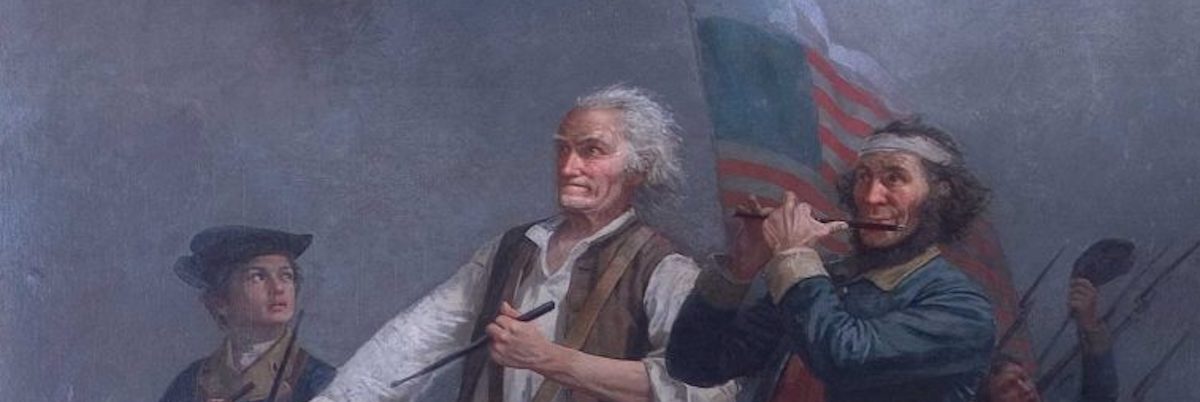
Place of business: Unknown
Dates of business: Unknown
This fife came out of the collection of Tom Wnuck, a well known Revolutionary War Collector.
Quote from Harold Peterson’s “The Book of the Continental Soldier”: “Another series of iron fifes made originally as such has also been found. One was excavated from Red Bank battleground, New Jersey and is now in the Smithsonian. Another was dug up at Saratoga and is displayed at Saratoga National Historic Park. The history of these fifes is obscured, however, by the fact that a third identical specimen has been uncovered at Fort Union, New Mexico, in circumstances that indicate a late nineteen-century date. This immediately raises the question of whether the two found on Revolutionary War sites might have been lost during centennial celebrations in the 1870’s or whether the Fort Union specimen was an heirloom. Too date this question has not been resolved.”
QUESTIONS:
1. Could some of the American troops have used iron fifes?
2. Do we have any examples of iron fifes that date to the period of the war, or earlier?
3. Does this fife look like a product of the Centennial (1876) Celebrations?
4. Do you think this fife was common to American fifers during the war.
ANSWERS: 1. Maybe. During the early years of the war, when supplies were scare, it is possible that an iron maker thought he could make a better product (one which did not break, split, etc…) and get some of that “war” money. Is this a fact? No, but it could be a possibility. If furniture, clock, etc….makers were making fifes, why not an iron maker.
2. It could be, but it doesn’t make sense. During the 1870’s we, as a nation were much more advanced that what I see with the craftsmanship of this instrument. Other materials were available for the making of “souvenir fifes” to be used for the Centennial. Brass, nickel silver and even wood, would have been an easier choice of material to work with. Why would someone go through the trouble to cast, drill and file a piece of iron? (poorly, I might ad) Also, during the 1870’s, Bb and C fifes were very common. Why would a company make, for the Centennial Celebration, fifes pitched in “D”? And would not something of the Centennial Celebration be a “special” item, and not a crude piece of iron? And why iron? Did someone say: “Let’s make some fifes of iron, that’s what they used during the Revolution!” It just doesn’t make sense!
3. No, I think this was something made, possibly for a few units, in a certain area, but not a common fife for the war.
Now, do I say that this fife is definitely from the AWI? No, what I am saying is that it could be. I am not 100% for, nor 100% against.
More research must be done!
Features:
Length of Instrument-the fife is 13 3/4 inches.
Wood-Not made of wood, made of IRON. The instrument is quite crude, and one can still see the file marks.
Key of instrument-seems to be in D.
Finger Holes-seems to be all of the same size. Also, the finger holes are not “drilled” straight, and are not in a uniform line. The embouchure hole is angled in, toward the player.
The spacing on the holes is as follows:
1-2=.786
2-3=.746
3-4=.787
4-5=.730
5-6=.748
This shows that the hole pattern is not 100% even, but is more in line with the theory that the earlier fife holes were all the same size and drilled at an even distance. (this theory, as I have shown from the other early fifes in this study, is not valid, at least for the known woodwind makers.)
Swell-There is no swell on the instrument.
Ferrules- There are no ferrules on the instrument.
